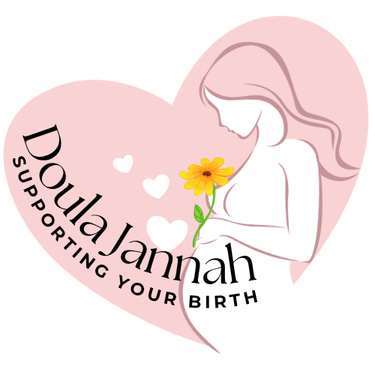How to Reduce Tearing During Birth
FIVE PROVEN STRATEGIES
6/20/20254 min read


One of the most common concerns expectant mothers have about vaginal birth is the possibility of tearing. While this concern is completely understandable, it is important to know that tearing is not inevitable. With the right preparation and techniques, you can significantly reduce your risk and experience a smoother, more comfortable birth.
1. Practice Perineal Massage Before Birth
Perineal massage helps to stretch and soften the perineum, the area between the vaginal opening and anus, making it more flexible for birth. Research suggests that regular perineal massage in the weeks leading up to labour can reduce the risk of severe tearing.
When to start: Around 34 to 36 weeks of pregnancy.
How to do it:
Wash your hands thoroughly and apply a natural oil (edible—oil that you can eat/cook with), such as coconut or olive oil, to your fingers.
Insert your thumbs into the vaginal opening (towards your anus) and gently press downward.
Slowly stretch the sides outward in a U-shaped motion for five to ten minutes daily.
If you find this difficult, your partner can assist, or you may use a perineal massage tool for ease.
2. Stay Relaxed and Focus on Breathing During Labour
Tension in the pelvic muscles can increase the risk of tearing. The more relaxed your body is, the more easily it will stretch to accommodate your baby’s birth.
Breathing techniques to reduce tension:
Take slow, deep breaths as contractions build.
Exhale with a slow, open-mouth sigh to encourage relaxation.
Keep the jaw, shoulders, and hands loose—tension in the jaw often correlates with tension in the pelvic floor.
By maintaining relaxation through each contraction, your body can adapt and open more gradually, reducing unnecessary strain on the perineum.
3. Use Upright and Open Positions for Pushing
Lying on your back increases pressure on the perineum and restricts the natural movement of the pelvis, making tearing more likely. Instead, opt for positions that allow your pelvis to open naturally.
Recommended positions for pushing:
Side-lying—Gentle on the perineum while still allowing space for the baby to descend.
Hands and knees—reduces perineal pressure and encourages an even distribution of weight.
Squatting—Opens the pelvis wider, allowing for more space for the baby’s descent.
Discuss these options with your doctor in advance and communicate your preference to move freely during labour.
4. Mother-Led Pushing: Trusting Your Body’s Natural Urge
The way a woman pushes during birth can significantly impact the risk of perineal tearing. In many hospitals, a common practice known as “purple pushing” is encouraged. This technique involves holding your breath (closed-glottis pushing) and pushing forcefully for a count of 10, often multiple times per contraction—typically while lying on your back.
What happens with purple pushing?
Often directed by the doctor or midwife, rather than initiated by the mother.
Creates intense pressure on the perineum, increasing the risk of tearing.
Can lead to exhaustion and decreased oxygen flow to both the mother and baby.
Sometimes causes swelling in the birth canal, making delivery more difficult.
While this approach is common in hospitals in Singapore, it is not always necessary or beneficial. Instead, allowing the mother to push in response to her body’s natural signals—rather than being told when and how to push—can result in a gentler, more controlled birth.
The Benefits of Mother-Led Pushing
Mother-led pushing, also called instinctive pushing or physiological pushing, allows you to work with your body rather than against it.
What does mother-led pushing look like?
Following your natural urge to push, rather than pushing on command.
Exhaling or breathing through the push instead of holding your breath.
Pushing in shorter, more natural bursts, rather than prolonged forced pushing.
Allowing your baby to descend gradually, which gives the perineum time to stretch.
How to Support Mother-Led Pushing
Stay in an upright or forward-leaning position to let gravity assist.
Tune in to your body’s signals—some contractions may feel stronger, others may require less effort.
Focus on open-glottis pushing—breathing out as you push, rather than straining with a closed throat.
Work with your provider to ensure they support instinctive pushing rather than directing the process rigidly.
By trusting your body’s cues, pushing becomes more efficient, less exhausting, and gentler on the perineum. This approach lowers the risk of severe tearing and allows for a more controlled, empowering birth experience.
If your hospital routinely enforces directed pushing, it is helpful to discuss your birth preferences in advance with your provider. A supportive birth team—including a doula—can also help you advocate for mother-led, instinctive pushing techniques during labour.
5. Apply Warm Compresses During Crowning
As the baby’s head begins to emerge (crowning), applying a warm compress to the perineum can soften the tissues, increase circulation, and reduce the likelihood of severe tearing.
How to use a warm compress:
Ask your doula or birth partner/spouse to hold a warm, damp cloth against the perineum.
Some midwives use warm water or oil to keep the perineum soft and elastic.
This technique can also provide comfort and mild pain relief during crowning.
Studies indicate that women who use warm compresses during crowning experience fewer severe perineal tears, making this a simple yet effective preventative measure.
Supporting Your Body for a Gentle Birth
While tearing is a concern for many women, there are proven ways to reduce the risk. By preparing your perineum with massage, maintaining relaxation, choosing optimal birth positions, avoiding forced pushing, and using warm compresses, you can significantly improve your chances of a gentle and less traumatic birth experience.
Even if some degree of tearing occurs, your body is designed to heal. With the right support and postpartum care, recovery can be smooth and manageable.
If you would like more guidance on birth preparation, perineal care, and techniques for a positive, empowered birth experience, consider joining my birth preparation class for expert insights and hands-on techniques tailored to your needs OR book a FREE 30-minute consultation with me.
